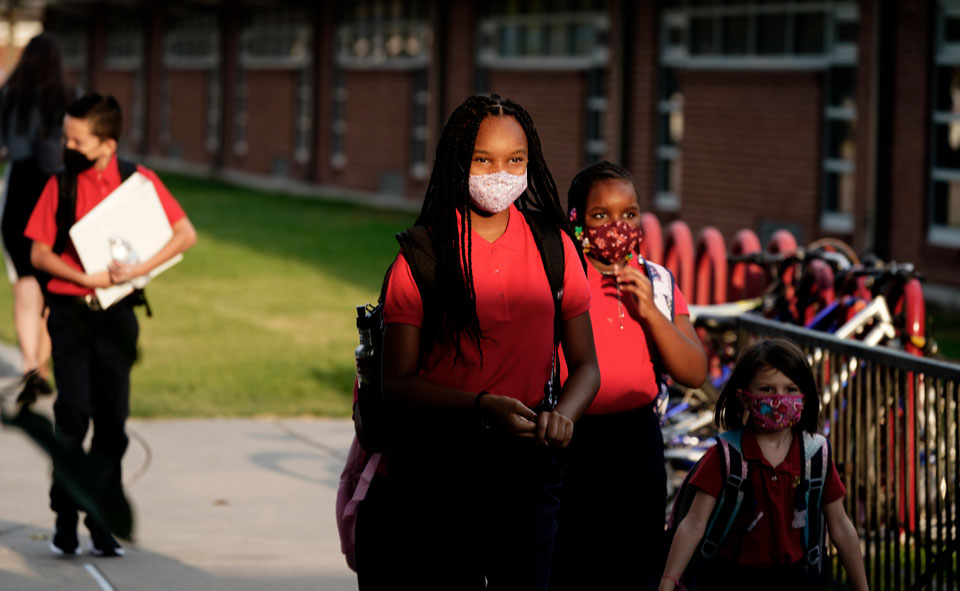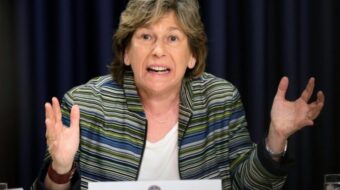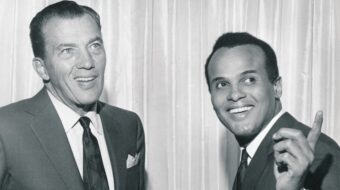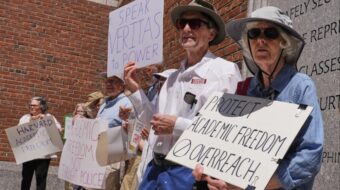
What is the “Critical Race Theory” bill that Texas Gov. Greg Abbott recently signed, Senate Bill 3? It’s an attempt by the extreme right wing of the ruling class to intimidate teachers to stop them from teaching about systemic racism and how this country is built on a history of racial and class oppression, such as the enslavement of Africans and the genocide of the Indigenous peoples, oppression and exploitation of Mexicans and other Latinos, and other non-white people.
Racial oppression does not only exist in the United States; it also exists throughout the world as Western colonialism and imperialism became a dominant force throughout the world. This global system continues today with the ongoing hegemony of United States imperialism. As Communist and anti-imperialist activist Claudia Jones once said, “Imperialism is the root cause of racism. It is the ideology which upholds colonial rule and exploitation. It is the ideology which breeds fascism, rightly condemned by the civilized people of the whole world.”
The critical race theory bill in Texas is part of the extreme right’s backlash as a result of the 2020 uprising against systemic white racism during the George Floyd and Brionna Taylor protests and marches. Anti-racism scholar Angela Davis said these were the biggest protests and uprisings ever before in U.S. history. I have heard from other elder activists that the marches of summer 2020 were the biggest uprisings that they had ever seen in their lives.
Without a doubt, these protests left an indelible mark on the country and forever changed the consciousness of people in the United States. When I attended these protests, I had never before seen so much passion and solidarity from so many people, largely young people who were determined to change America. All “races” were involved, including, Black, Latino, Native American, white, Asian, Middle Eastern, and more. This “critical race theory” bill is an attempt by the extreme right and neo-Confederate forces to keep us in the past.
The bill also attempts to ban teachers from giving students assignments or credit for community activism against racism or injustice. Of course, the ruling class and its extreme right elements will go all out to stop the multiracial working class and the masses of people from empowering themselves and making change.
Teachers have a problem with it because they want to provide the next generations with a true history of oppression and exploitation in the United States and the world. They see racial oppression—such as the police killing of George Floyd, racist police terrorism, racist mass incarceration (disproportionately of African Americans, Latinos, and low income people in general), discrimination against immigrants—and they want to teach about where this all comes from.
Education is often a first step in being moved to make change. When you become educated about problems that you already see in the world, it inspires and emboldens you to go out and do something to try to fix the problems in the world. This is why I and many other people like me became teachers.
Why students are against it: African American, Latino/a, Native American, Middle Eastern, Asian, and white students see white racism in the world. They are aware of it and often have very sophisticated analyses about it if you ask them. The school that I teach at is close to 90% Latino. I have asked my students what they think are the biggest problems in the world. Many will say racism and cite the police killings of Black and brown people as an example. Students are very passionate about the issue of police brutality. Others will say poverty, hunger, global warming, constant war, and the COVID-19 pandemic are some of the biggest problems in the world. Some will even specifically mention capitalism as the biggest problem in the world.
Once I asked students if they see or experience racism in the world themselves? They said yes, that oftentimes white people will treat Latinos or Hispanics and Black people as inferior. I asked them when they first noticed racism in the world. One student said they first noticed racism in the world at school as a young child when they saw how most of the custodians were Hispanic/Latino or Black while a majority of the teachers were white.
They appreciate education which teaches them about where this phenomenon comes from and how to end it. They want an education that is relevant to them. Nothing is more relevant to them than learning about the root causes of the biggest problems in the world, such as white racism, poverty, global warming, constant war, world hunger, etc.
What should teachers do? Join your union, either an AFT or NEA affiliate, and organize staff on your campus around issues that empower teachers, school workers, students, parents, and the community. It may be necessary to form some sort of racial justice caucus within your union, as well, so be prepared for that.
The issues teachers and school workers could organize around might include fighting to provide students with a true education about systemic racism, fighting to end constant standardized testing, fighting against school privatization, COVID-19 safety, and more. These issues should all be linked together.
What should students and parents do? Form community associations, join existing organizations, and build coalitions and alliances with the teachers unions, speak out at the school board meetings, and fight back!
As with all op-eds published by People’s World, this article represents the opinions of its author.










